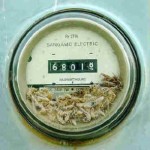PURPA
Sounds like a designer color, doesn’t it? It’s actually a federal program: Public Utilities Regulatory Policies Act, and it has a big impact on the state of Idaho.
Part of the joy of this job comes when I get to learn about our industries and the resourcefulness of this great state. Not all of us but a lot of Idahoans, indeed a lot of Americans, hate the federal government. It is big and far away and easy to blame. Still, as a state we get more federal dollars than we give. It can be a difficult relationship. This federal law (PURPA) was enacted in the 1970’s and has helped energy production and conservation in our state. I find it inspirational.
I am a freshman Senator in the minority party thus I get assigned to interim committees. These committees meet between sessions, so I go to Boise to attend these meetings, to learn and participate. I got placed on the Energy, Environment and Technology Interim Committee. Our main task for this interim is to update the Idaho Energy Plan. I will write more about this later. One of the presentations we heard was about PURPA. I was fascinated.
The PURPA legislation requires investor owned utilities (IOUs, that is Idaho Power, Avista) to buy back power from small generators. It defined how the price for this purchase is to be set. The formula for the price is based on the cost the utility would have to incur if it were to build a new plant to generate this power, i.e., the replacement cost. The thinking was that the power sold back to the utility would let them avoid building a new generator and the determined cost would help the small generators with their financing. This is the point of friction.
But here’s the beauty. There are many small generators here in Idaho. For instance, a sugar plant buys electricity from Idaho Power to boil up the sugar beets, but it can put in a regeneration plant on the waste heat from the process and sell the energy back to the utility. Or an irrigation district that pays for power to pump water from the aquifer up to its canal can find a place in the canal for a low head (canal drop) generating system and sell this electricity back. These regenerating practices save energy for the total system and saves money for the consumers. At any one time here in the state of Idaho between 10% and 30% of the total energy used comes from the repurchased power of small generators. Such frugal, efficient behavior makes me proud.
But there’s a rub. What if a farmer with a lot of land and a wind developer decide to put in 100 wind turbines?  The IOU must buy back the power. But the utility company must provide power when there is a demand. We don’t currently have a way to store excess electricity. We can store water behind dams. We can shut down the flow of natural gas to turbines, or we can stop the use of coal for such plants. But we cannot stop the wind or require it to blow. We want our houses cool in the summer and the lights on in the winter. The utility company is required to match production with demand, but it is also required to pay generators who may not respond to such demand. We have delicate balances here. And the legislature is often the place these balances are addressed.
The IOU must buy back the power. But the utility company must provide power when there is a demand. We don’t currently have a way to store excess electricity. We can store water behind dams. We can shut down the flow of natural gas to turbines, or we can stop the use of coal for such plants. But we cannot stop the wind or require it to blow. We want our houses cool in the summer and the lights on in the winter. The utility company is required to match production with demand, but it is also required to pay generators who may not respond to such demand. We have delicate balances here. And the legislature is often the place these balances are addressed.
 The IOU must buy back the power. But the utility company must provide power when there is a demand. We don’t currently have a way to store excess electricity. We can store water behind dams. We can shut down the flow of natural gas to turbines, or we can stop the use of coal for such plants. But we cannot stop the wind or require it to blow. We want our houses cool in the summer and the lights on in the winter. The utility company is required to match production with demand, but it is also required to pay generators who may not respond to such demand. We have delicate balances here. And the legislature is often the place these balances are addressed.
The IOU must buy back the power. But the utility company must provide power when there is a demand. We don’t currently have a way to store excess electricity. We can store water behind dams. We can shut down the flow of natural gas to turbines, or we can stop the use of coal for such plants. But we cannot stop the wind or require it to blow. We want our houses cool in the summer and the lights on in the winter. The utility company is required to match production with demand, but it is also required to pay generators who may not respond to such demand. We have delicate balances here. And the legislature is often the place these balances are addressed.Regulations and rules made by governing bodies can be the pivot for such problems. To get financing, wind generators need confidence in their return on the huge investment they require, but the utilities find these small producers annoying. Indeed, they can be expensive. The huge runoff this spring of 2011 meant Bonneville Power had to first curtail all their coal and gas-generating plants, then tell the wind generators they could not take their electricity. But they had to pay the wind farms for the power, even though it was surplus. For this reason, the PURPA obligation is considered a liability on the IOU balance sheet. It is a debt. So to balance their books for investors they may have to acquire assets, another cost that decreases dividends.
Each year, for the past ten years, residential electricity consumption in the state of Idaho has gone down.  Even with the housing boom, home owners are conserving. Small producers are increasing. I see this as a wonderful problem. Public policy must keep encouraging conservation and appropriate generation. I hope our governance can see the right direction through all these flowing streams.
Even with the housing boom, home owners are conserving. Small producers are increasing. I see this as a wonderful problem. Public policy must keep encouraging conservation and appropriate generation. I hope our governance can see the right direction through all these flowing streams.
 Even with the housing boom, home owners are conserving. Small producers are increasing. I see this as a wonderful problem. Public policy must keep encouraging conservation and appropriate generation. I hope our governance can see the right direction through all these flowing streams.
Even with the housing boom, home owners are conserving. Small producers are increasing. I see this as a wonderful problem. Public policy must keep encouraging conservation and appropriate generation. I hope our governance can see the right direction through all these flowing streams.